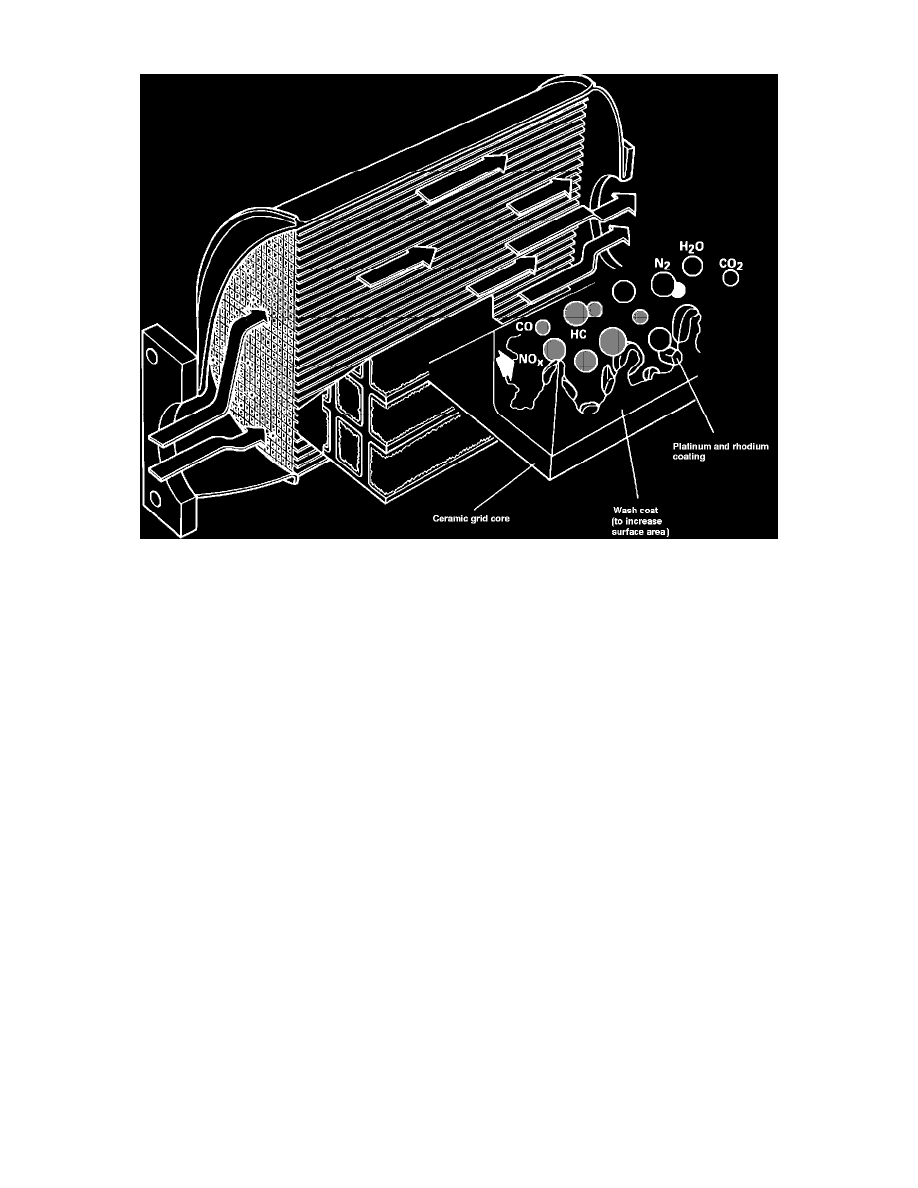Corrado V6-2792cc 2.8L DOHC (1992)

Catalytic Converter: Description and Operation
Typical Three Way Catalytic Converter
The three way catalytic converter simultaneously removes up to 90% of all three major pollutants, (HC, CO, and oxides of nitrogen). A complete
catalytic reaction depends on the fuel mixture staying within a very narrow range (14.7:1 +/- 1%), which can only be achieved with a properly
functioning oxygen sensor system. The catalytic converter consists of a metal housing, and a ceramic grid substrate coated with small amounts of
platinum and rhodium (the catalysts). Most converters contain only a few grams of the catalysts.
As the exhaust gasses containing HC and CO are passed through the converter in the presence of oxygen, the platinum catalyst starts the oxidation
(burning) process. The HC is broken down by the catalyst and then oxidized along with the CO to form water vapor and carbon dioxide.
To reduce the oxides of nitrogen (NOx), a separate reaction is necessary called a 'reduction.' A reduction reaction is the removal of oxygen from a
material. In the Three Way type converters, rhodium is used as the catalyst to break down the oxides of nitrogen into its components, nitrogen and
oxygen. The oxygen is then consumed in the oxidation reactions of HC and CO. The nitrogen is discharged back into the atmosphere.
The effective conversion of pollutants begins at an operating temperature of about 480°F (250°C). The ideal operating temperature for maximum
conversion and long service life is 750°F - 1500°F (400°C - 800°C). Engine malfunctions, for example misfires, can increase converter temperature to
greater than 2500°F (1400°C). High temperatures like this can destroy the converter by melting of the substrate material. This renders the catalysts
ineffective and results in exhaust restriction.
The use of leaded fuel must be avoided. The lead compounds will deposit in the pores and on the surfaces of the active material, reducing or eliminating
exposure of the catalysts to the exhaust gasses. Excessive engine oil residues can also poison the catalyst.
